Who doesn’t love a good logic puzzle?
There’s something so satisfying about solving a puzzle using nothing but your wits.
No special cards. No victory points. Just you and your brain racing to find the answer before your opponents.
This is the simple and thrilling joy you’ll find as you, the cryptozoologist, connect the dots to uncover the elusive creature in Cryptid.
What is Cryptid?
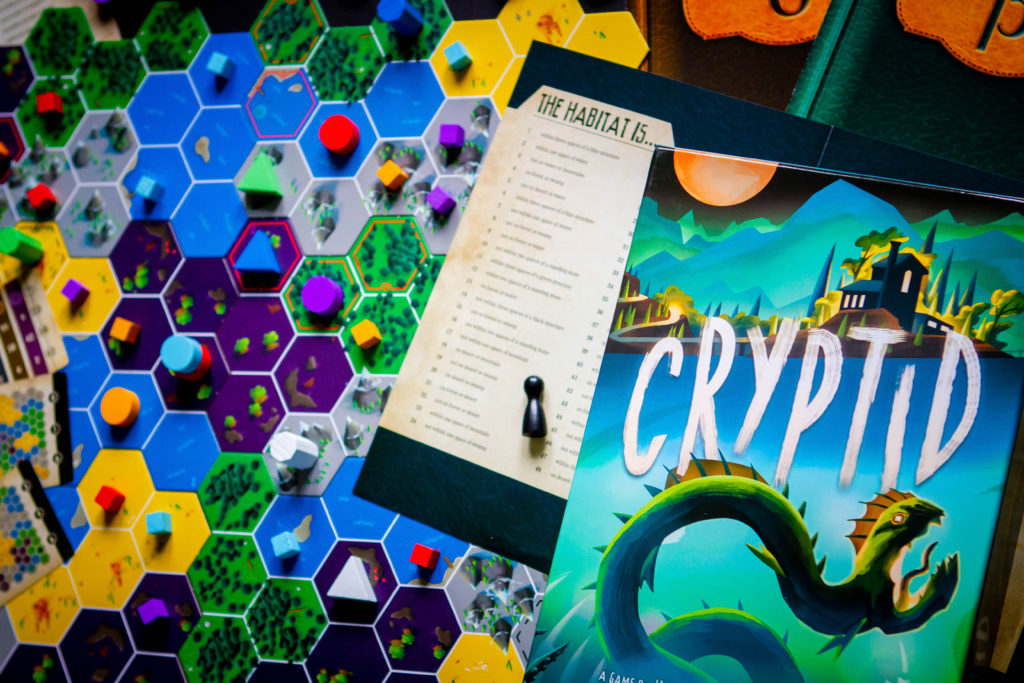
Cryptid is a logical deduction game where players take on the role of cryptozoologists in search of a hidden creature. Every player has exactly one clue that gives information about where the creature lives. When all of the clues are combined, they lead to a single, solitary spot on the map that indicates where the creature can be found.
The first person to find this spot is the winner.
How do you play?
Players begin by selecting a set of starting pieces and setting up the map with the help of one of the 54 cards in the desired difficulty level, (normal or advanced) or the free companion app.
On one side of the card is a depiction of how the map should look and where the “abandoned shack” and “standing stone” structures should be placed on the board. (definitely make sure to double check everything, as the game will not work if this is not correct.)
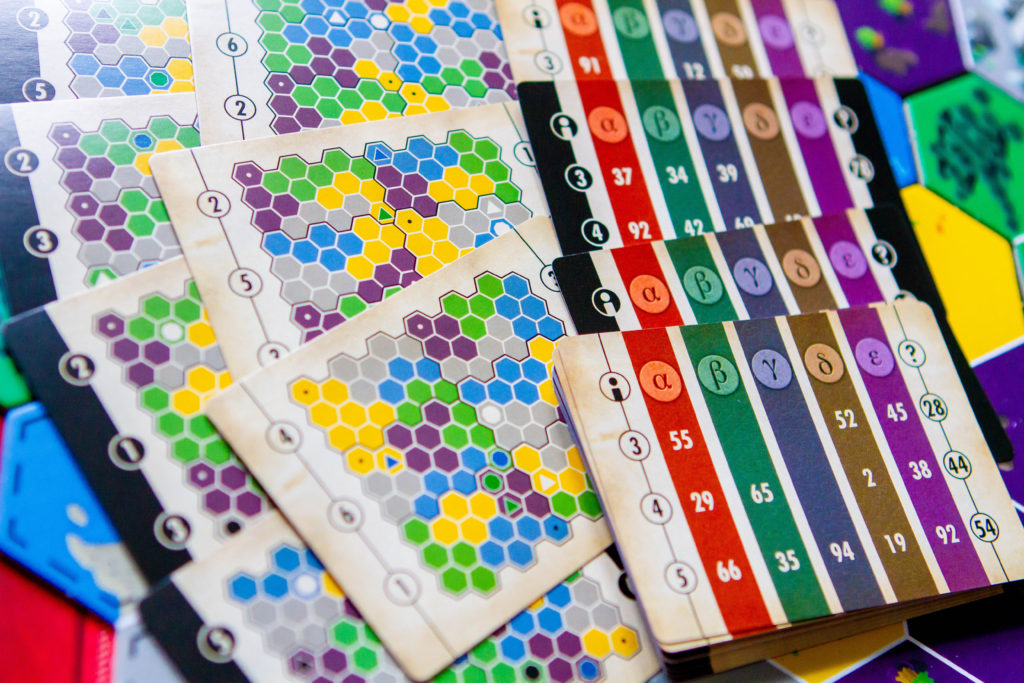
On the other side of the card are the numbers players will use to find their clue in the clue books. Each player will select one clue book as indicated on the back of the card. The number on the card matches to a clue in their book, giving them their single clue for the game. Everyone keeps these secret.
Each player has cubes and discs in their chosen player colors. The cubes are used to indicate that a space on the board could not be the creatures habitat according to their clue while the discs are used to indicate that, according to their clue, could be the creatures habitat.
Before players begin taking turns, there is an initial sharing phase where each player in clockwise order will place a cube on the map in a location that could not be the habitat. Players will do this until all players have placed two cubes on the board.
The game is played in turns until one person correctly identifies the single spot on the map where the creature’s habitat is located.
On your turn, you will do one of two things, as a player a question or search for the creature.
To question, simply place the black pawn on a space on the map and ask any player if the creature could be there. You may ask any player, even if they were just asked previously.
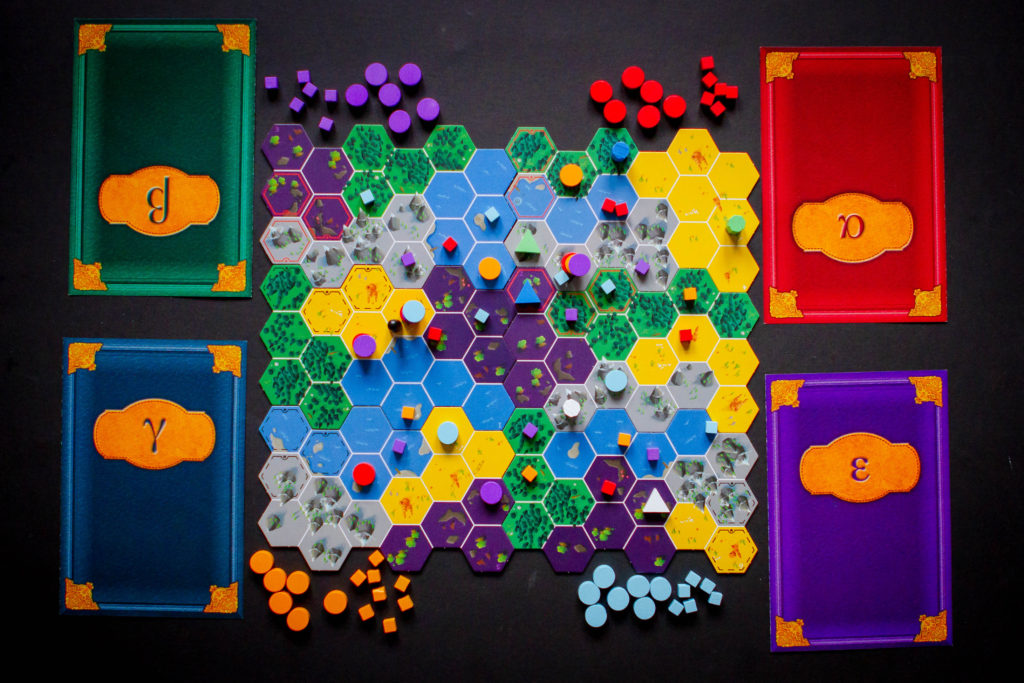
The player questioned must then answer yes or no by placing a cube on the space if, according to their clue, the creature could not be there, or a disc if the creature could. If they place a cube, you must then also place a cube in your color on an empty space that could not be the habitat according to your clue.
Then play passes to the next player.
If you choose to search for the creature on your turn, take the pawn, place it on a spot on the board and declare a search, placing one of your discs immediately on the space (if one of your discs is already on the space you are searching, then you’ll place one somewhere else on the board that could also be the space.)
Then in clockwise order, each player must place a cube or a disc on the space. As soon as someone places a cube, everyone stops, no one else will place anything and the searcher must now place a cube on a different space which cannot be the habitat according to their clue.
If nobody places a cube, then congratulations! You have identified the habitat of the creature and are the winner of the game!
Bask in your glory and the envy of your friends!
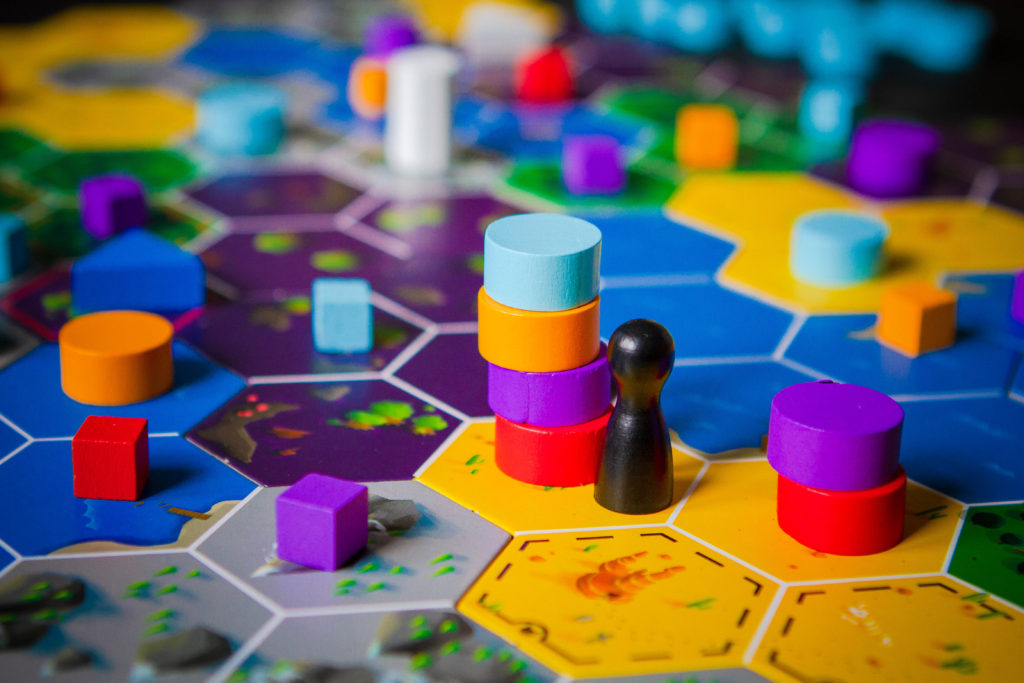
What do we think?
Sometimes you just want a quiet, thoughtful game to play without any gimmicks. Cryptid is the perfect choice for those occasions.
We’ve played this with a few different groups now and each time it has been an utterly enjoyable experience as everyone quietly examines the board, thinking to themselves as they look over all of the evidence on the table. Everyone can feel the excitement that starts to tingle in the air as you get closer to knowing where the creature is. I love this aspect. While it’s pretty quiet to play, the game is definitely alive and feels exciting as you zero in closer and closer to where you need to be.
Finding the creature is also very satisfying, even if it wasn’t you who figured it out. (But let’s be honest, it feels awesome to be the one to find it.) Everyone goes immediately from the near silent gameplay to exclamations of “Yes!” And “Ah! I was so close!” It’s also a lot of fun to see how many clues everyone had figured out.
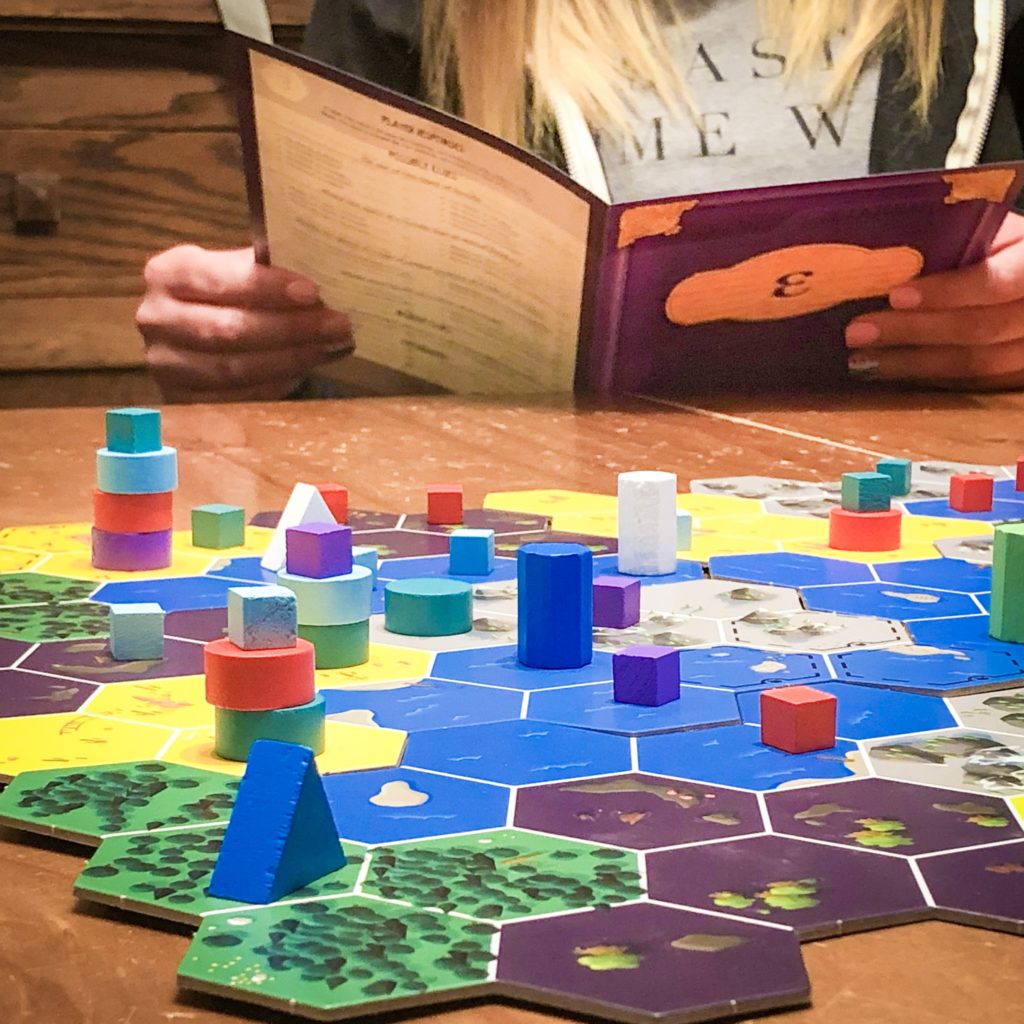
Deduction games are some of my most favorite styles to play and Cryptid is a fantastic addition to the genre. I absolutely love that it is so simple. There are no cards, dice, or variable player objectives to worry about. You are simply trying to deduce where the creature is through pure logic.
You aren’t limited in what you can do either. While the turns are simple, question or search, you can ask any player you’d like, even if someone just asked them on the turn before you, and select anywhere on the board to ask them for information. But even though this is simple, you still have a lot to think about before you do because if you ask them and they put out a cube then you also have to place one on the board. This gives everyone information about your clue and helps them.
Then again, if you ask someone a question and they place a disc, you don’t have to place a disc of your own, but now maybe you’ve given everyone else just what they’ve needed to solve to puzzle. So maybe you ask someone about a space you know the creature can’t be based on your clue in hopes to both learn something and throw your opponents off your scent?
This mental back and forth and constant weighing of options is what makes Cryptid so great.
Theme
Cryptid is a pretty straight forward deduction game. Searching for a single, specific spot on the board works very well within the theme of searching for an elusive creature. The topographical art works well and feels a lot like a map that players are all looking over, searching for answers.
Such as in movies like Jaws, or novels like Moby Dick, you look out over the map knowing that the answer, the creature, is somewhere out there on one of these spaces. I really enjoyed the feeling as the game progressed and more pieces were placed on the board, that I had all of the clues I needed to solve the puzzle, I just had to figure it out.
Components
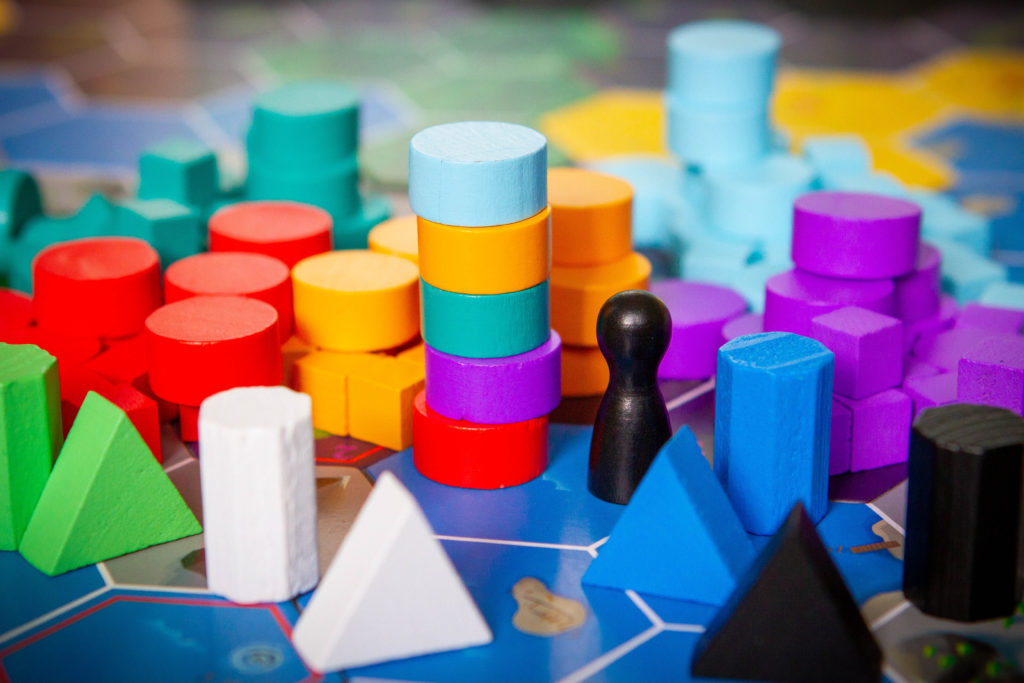
The art is really quite lovely. Every space on the board is easily distinguishable so if you’re sitting across the table you can still make out what is on the map across from you without too much of an issue. The modular board, clue books, and set-up cards offer many many configurations for multiple player counts, (in both normal and advanced difficulties) adding high levels of replayability.
Cryptid’s board is set up using map cards. These cards are easy to follow but, if you prefer, there is also a free app companion that can help you get the board set up and give every player their clues. The app work very well but is not necessary if you’d rather not use it. Set up of each game is just as fast using either method.
The wooden player components markers are nice, vibrant, well made pieces. They are simple, but I appreciate that they aren’t too big or too distracting as you’ll have quite a few of them on the board as the game goes on. The only components that left me feeling a bit disappointed was the searching pawn marker and structure pieces. While they work fine for the game’s purpose, I would have liked to see a tad bit more production in them. Especially the pawn. Not designing it to look like the creature on the box art seems like a bit of a miss. That would be a lot more exciting and added some fun to the board.
The one thing they did not include in the game are sheets of paper to aid players in the deduction process. The rule book mentions players may want to use paper and pen during the game to help them as there are a wide variety of different types of clues and the more people you are playing with the more difficult it becomes to keep these clues separate and remember what you’ve ruled out.
Personally, I have yet to feel like I’ve needed to use paper and pen to help, but other players we have played with have found this very helpful. I recommend playing your first game without the use of paper and seeing how it goes. There are such a wide variety of clues that just because a player places a cube on, say, a water space, it doesn’t mean that the creature can’t be in the water, it may be because the water space is too far away from a structure, or a desert space, or perhaps an animal territory. You could write something down one turn, and then be erasing it just seconds later depending on how the game progresses.
How does it play with two?
Guess what? You can easily play Cryptid with two players! Depending on your game, your rules sheet may or may not include the two player rules. If your rules do not have it, you can download them HERE!
Most deduction games require at least a party of three, but with Cryptid you can play with two players by setting the game up for four. You and your opponent will have two colors and two clues each.
I really enjoyed the play experience with two! There are a lot more opportunities for deception here as well. It does take a bit of getting used to managing two different clues and making sure you don’t accidentally mess up your colors, but it’s not too difficult.
Strategy feels more complex in a two player game as you have a few choices to make each time you are asked a question that you do not in a 3+ player game.
If the space works for both of your clues, you need to place discs from both colors on the spot. However, if the space does work for one of your clues but not the other, you’ll place the cube on the space and will NOT place the disc. When a space does not work for either of your clues, then you get to choose which cube to place on the space, not both.
Now when you place a cube your opponent has to think, “does this space work for the other clue? Or neither clue?” Even when you find a spot that delivers two discs, you need to think back at previous spaces to see how the discs line up with the cubes. It is a lot trickier as you now have more control over what information you reveal and a lot more to think about with the information you think you know.
It’s a great two player experience.
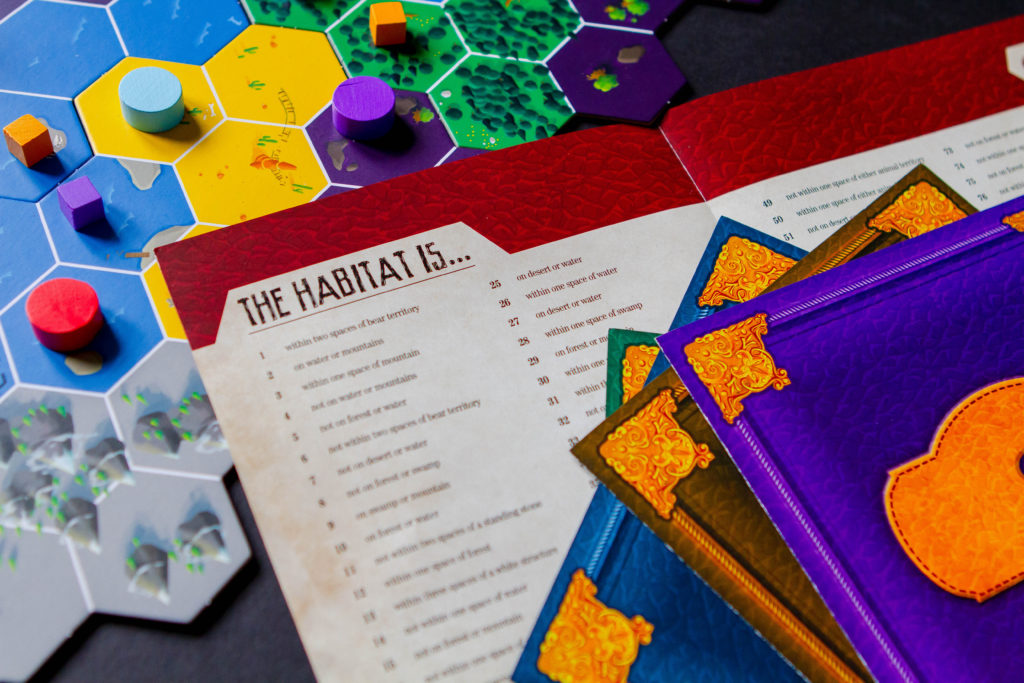
Can kids play?
Cryptid is a perfectly family friendly game that you can enjoy playing with just about anyone, but due to the reading element and the need for total independence in play, players will most likely need to be about 10-12 to be able to enjoy it themselves.
Players only have one clue and must be able to not only read the clue on their own, but also understand what that clue means in relation to spaces on the map. They’ll have to be able to analyze each space to know whether or not the monster could be found there based on their clue alone. On top of that, they’ll also have to be able to deduce the clues of others based on their yes/no responses throughout the game as well. This can be a challenging puzzle for anyone that will definitely prove a touch too difficult for younger players.
Summary
Cryptid is an amazingly clever deduction game that truly blows me away in the simplicity of its design. I love that there are no extra gimmicks thrown in here. You simply select a location on the map to ask another player if the creature could be there based on their clue and interpret their yes or no response. Each turn provides the group with just a tad bit more information than they had the turn previously. But the only way to win the game is by finding the creature. Not by getting the most victory points, or having a good dice roll. You win by using your powers of deduction to figure out the simple clues on the map in front of you.
Cryptid is easy to teach to new players and is a great game to play with both experienced and new gamers alike and plays great at multiple player counts so you can get it to the table often.
As a huge fan of deduction games, I highly recommend Cryptid to just about anyone, and especially to those who love puzzle solving and pure logic driven experiences.
To locate your own copy of Cryptid, click HERE or visit your FLGS!
This post contains affiliate links at no cost to you. To read our full disclosure click here.
Game Info:
Title: Cryptid
Ages: 10+
Designer: Hal Duncan, Ruth Veevers
Artist: Kwanchai Moruya
Publisher: Osprey Games
Published: 2018
If you enjoyed this post you may also like:
6 of our Favorite Social Deduction Games
10 Great Games for Date Night
Euphoria: Build a Better Dystopia Review


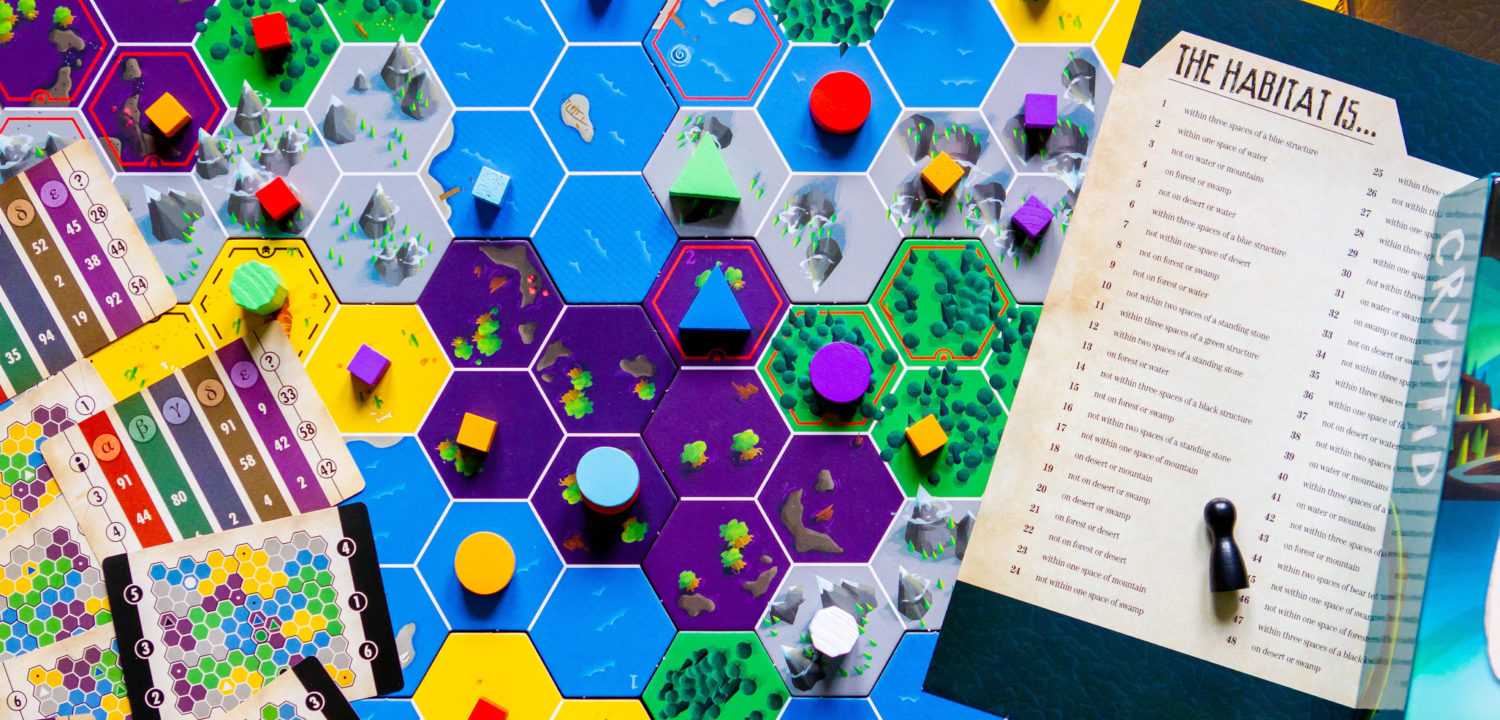

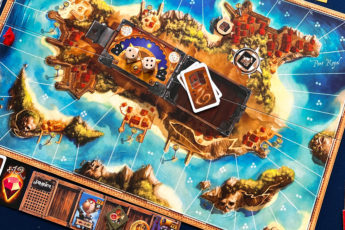






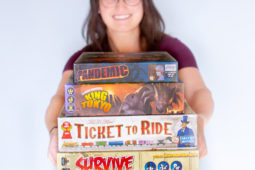
Leave a Comment